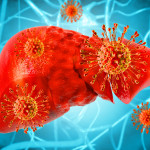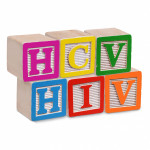Among people who have HIV and hepatitis C virus (HCV) coinfection, fatty liver disease is associated with a higher risk of death.
Non-alcoholic liver disease (NAFLD) and its more severe form, non-alcoholic steatohepatitis (NASH), are a growing cause of liver complications in the United States and worldwide.
Researchers analyzed data on nearly 1,000 French people with both HIV and HCV who were followed for a median of five years.
The study looked at the cohort members’ fatty liver index (FLI) score. This number is calculated using body mass index, waist circumference, triglycerides and gamma glutamyl transferase liver enzymes. A score below 30 indicates a lack of fatty liver disease, while a score of 60 or higher suggests the condition is present.
At the study’s outset, nearly 30% of the cohort members had a fatty liver index score of at least 60. Twelve percent had a score that high at all study visits, and 31% had scores both above and below 60 at some point during the study.
During the study’s follow-up period, 63 people died. Of these deaths, 40% were due to hepatitis C, 13% were due to cancers not related to HIV or hepatitis, 11% were due to AIDS-related illnesses and 5% were attributable to cardiovascular disease.
After controlling the data to account for various factors, the study authors found that those who entered the study with an FLI score of at least 60, compared with those who started with a score below 60, were nearly twice as likely to die during follow-up.
The researchers found that those with a history of liver cancer or transplantation at the study’s outset were nearly eight times more likely to die during follow-up. Other factors associated with a greater risk of death included having advanced liver fibrosis or signs of cirrhosis, advanced HIV disease and uncured HCV.
“FLI deserves more attention as a pragmatic screening tool in clinical practice,” says the study’s lead author, Maria Patrizia Carrieri, PhD, of Aix-Marseille University in France. “It can also offer the opportunity to address modifiable risk factors, such as lack of physical activity, and can propose interventions to modify them.”






Comments
Comments